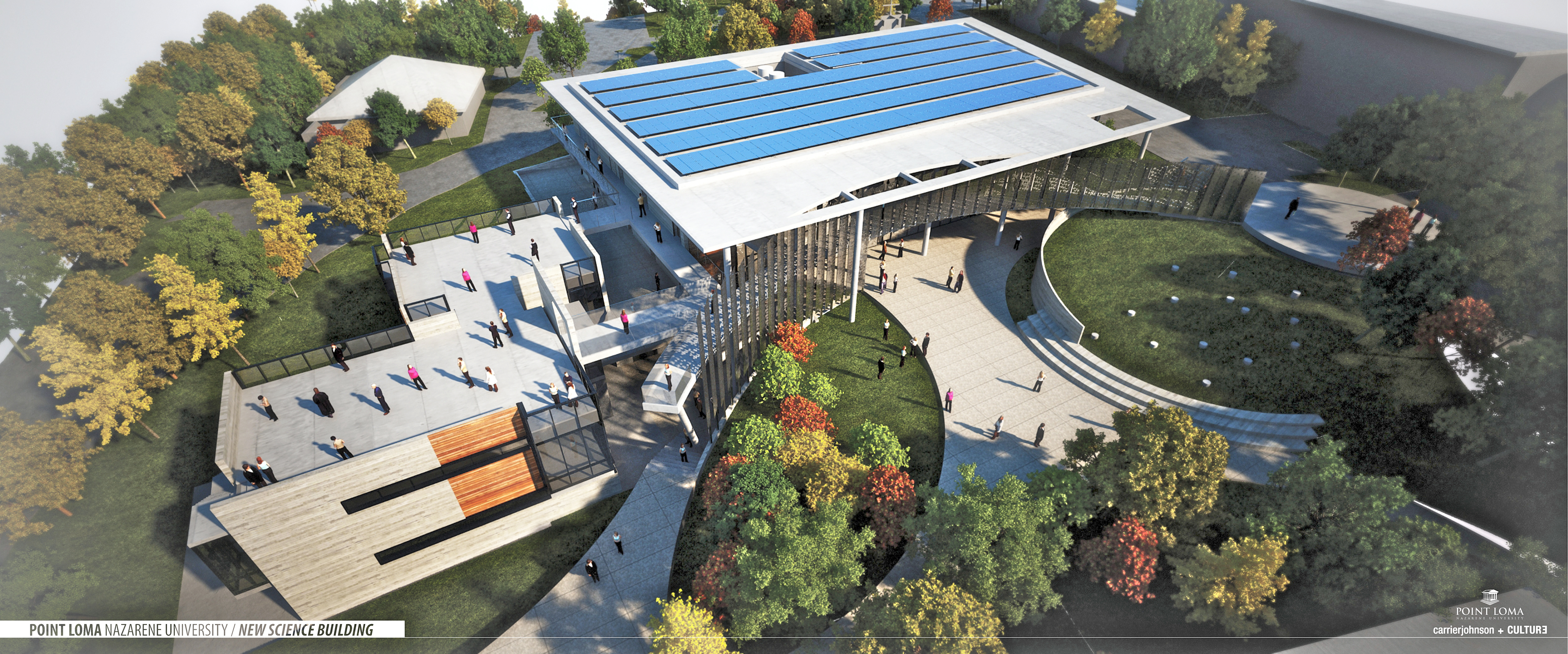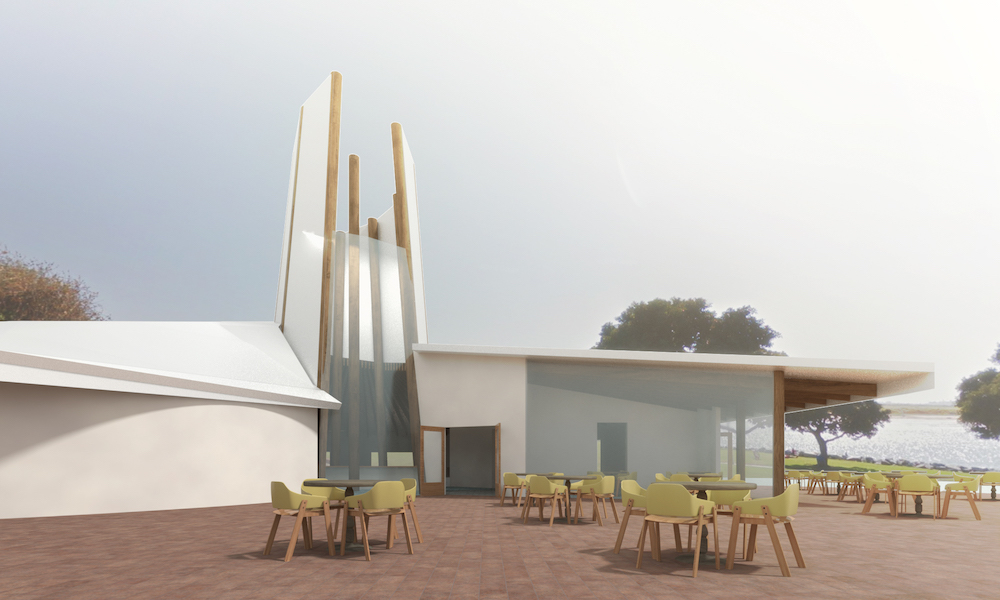Daily Business Report — Aug. 19, 2014
Artist’s rendering of the $8 million science building at Point Loma Nazarene University, which is scheduled for occupancy in fall 2015.
Point Loma Nazarene University
Getting a $28 Million Science Facility
Construction has begin on a $28 million science building at Point Loma Nazarene University, a project considered essential since nearly 40 percent of its undergraduate students major in one of the science-related disciplines.
University officials said it is also important because all undergraduate students are required to complete a laboratory science course during their time at the university.
Scheduled for occupancy in fall 2015, the two-story, 35,900-square-foot science complex will include 13 labs for biology, chemistry and anatomy as well as four classrooms and a rooftop patio. It will be located in the central core of the Point Loma campus.
Work is being done by general contracting firm Rudolph and Sletten under a design by Carrier Johnson + Culture. The building is on target for silver certification in the U.S. Green Building Council’s Leadership in Energy & Environmental Design (LEED) program.
Since the 1970s, the university’s science programs have been using outdated and overcrowded facilities, according to university officials.
“Every student will benefit from this investment,” said Ken Martin, longtime chair of PLNU’s Chemistry Department. “This much-needed facility will better reflect the quality of the faculty and students, further strengthening the undergraduate research programs which offer students the ability to conduct faculty mentored research — a hallmark of our science programs.”
Rudolph and Sletten has also done other campus facilities, including Scripps Institution of Oceanography at UC San Diego and the new Altman Translational Research Center in UTC.
The science building is funded through private sources and is the result of the largest capital campaign in PLNU’s history.
Council Overrides Veto of Minimum Wage
Hike, Setting Stage For Referendum Effort
The San Diego City Council voted Monday to override Mayor Kevin Faulconer’s of the ordinance increasing the minimum wage.
The vote was 6-2, with Councilmen Mark Kersey and Scott Sherman voting no. Councilwoman Lorie Zapf did not vote during the special recess meeting because she was camping with her family at Lake Tahoe and did not have Internet to access the livestream of the council meeting, her spokeswoman said. Kersey and Councilwoman Myrtle Cole were not at the meeting but voted over the phone.
The council needed six votes to override the veto. It originally passed the ordinance 6-3.
With the override, the hourly minimum wage in the city is scheduled to rise from $9 to $9.75 on Jan. 1 and require employers to provide five earned sick days a year. Wages would increase again to $10.50 on Jan. 1, 2016, and to $11.50 on Jan. 1, 2017. In 2019, the minimum wage would be tied to inflation.
After the meeting, a spokesman for the San Diego Small Business Coalition said the group is planning to collect signatures to force a referendum, which would require voters to approve the ordinance. Jason Roe said the group will send out signature gatherers starting mid-week.
They will have 30 days to gather 33,866 signatures, according to the city clerk. That would place a referendum on the wage increase a on a future ballot, either in the next citywide election in June 2016 or in a separate special election called by the City Council.
If the referendum is accepted by the city clerk, the minimum wage increase would be postponed until after a public vote.
— KPBS
Governor Signs Real Estate
Broker Agency Disclosure Bill
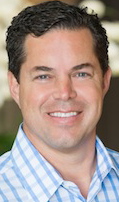
Gov. Jerry Brown has signed a real estate broker agency disclosure bill that its originator — Jason Hughes, president and CEO of Hughes Marino — said will create more transparency in the commercial real estate industry. Hughes said he conceived the idea two years ago and asked state Sen. Ben Hueso (D-San Diego) to sponsor it. It is SB 1171.
The measure stipulates that, effective Jan. 1, 2015, commercial real estate salespersons and brokers will need to provide, in writing, their exact proposed agency role in future transactions. The disclosure will need to be signed by the potential client priorto moving forward with any representation.
“It was quite an experience to actually conceive and facilitate getting a new law passed,” said Hughes. “I’m very proud of it — as it will create more consumer transparency in an industry that’s been operating for decades as landlords’ marketing arms. Now when you think you’re getting non-conflicted real estate representation, it will actually be true.”
“It astounded me that commercial real estate salespersons and brokers were not required to provide written disclosure to their clients about any conflicts of interests they may have — or who the brokers were actually representing,” Hughes said. “In residential real estate, agents are required by law to provide such disclosure immediately prior to engaging with a client. However, brokers for commercial transactions had no such requirement. What resulted was a tremendous amount of conflicted representation, which almost always adversely affected companies who were buying or leasing commercial space.”
According to the new law, the written disclosure must fall into one of three statements: (1) Agent represents only the landlord/seller; (2) Agent represents only the tenant/buyer; or (3) Dual Agency: agent represents both the landlord/seller and the tenant/buyer. There will be a Dual Agency definition immediately below the three choices stating that a Dual Agent is not allowed to provide any confidential information between the two parties, unless written consent is obtained. Breach of this confidentiality will have legal consequences for the broker.
Batu Biologics Raises $100,000 Using
Successful Crowdfunding Campaign
Using a fundraising approach seldom seen in the life sciences sector, Batu Biologics, a San Diego immunotherapy company working to develop the first anti-angiogenic cancer vaccine, has successfully raised $100,000 through the Indiegogo crowdfunding platform.
Batu Biologics launched the crowdfunding campaign in June 2014 to fund the completion of preclinical studies to support the FDA submission of its flagship immune therapy, ValloVax. ValloVax is a lung cancer vaccine that stimulates an immune response specifically against the tumor associated blood vessels.
“Batu Biologics would like to thank the generous donors to the campaign,” said Samuel Wagner, president and chief executive officer of Batu Biologics. “As a life science company, attempting a donation-based crowdfunding effort was a risky proposition. However, the success of this campaign is testament to the public enthusiasm for the significant steps in this company’s development of our non-toxic biological therapeutics. We are committed to maximizing progress with the funds that have been donated by our loyal supporters.”
Batu Biologics is working under an aggressive timeline for the development and approval of its drug and plans to submit an Investigational New Drug application to the FDA in the first quarter of 2015.
“We have a small team of dedicated individuals who are committed to moving ValloVax closer to becoming a promising option for those suffering from lung cancer,” Wagner said.
Spark Aerial Exceeds Kickstarter Goal
San Diego startup Spark Aerial reported Monday that it has exceeded 100 percent funding in its Kickstarter campaign with 22 days still remaining. The company is using the campaign to underwrite the cost of production for a video training series and online learning resources for aspiring quadcopter pilots and cinematographers.
Spark Aerial’s funded training series will teach the basics of flying camera-equipped drones of all types. The training videos will include the essential camera controls and editing skills needed to capture and produce video footage from the sky. Spark also has intent to build an accompanying web portal to track training and flight progress.
“We’re ecstatic that the KickStarter community is behind us and helped clear our initial goal so quickly. We’re most excited to connect with backers,” said Radley Angelo, co-founder and chief pilot of Spark Aerial.
Spark Aerial, founded by three engineering graduates from the University of California, San Diego, has worked previously with the National Geographic Society as well as the National Oceanic and Atmospheric Administration.
Parking Project to Limit Old Globe Way Access
The San Diego Zoo’s 650-space employee parking garage project has begun, with the first work at Old Globe Way the U-T San Diego reports. The $18 million project, funded by the zoo, will add a multilevel garage on the south side of the zoo, butting up against Old Globe Way. Completion is expected in July. That short road, north of the Casa del Prado, Botanical Building and San Diego Museum of Art, will be widened, relandscaped and beautified with improved lighting and reopened by February.
In the meantime, starting today, pedestrian and bicycle access will be banned and vehicular traffic will be limited to deliveries and limited employee parking for the Globe, Botanical Building and San Diego Museum of Art; drop-off spots for the disabled; 10-minute parking spaces for patrons to exchange tickets; and VIP valet service for $10,000-plus Globe patrons, said Globe spokeswoman Susan Chicoine.
Four UC San Diego Scientists
Receive Grants for Brain Research
Four scientists at UC San Diego are among 36 recipients nationwide who have been awarded early concept grants for brain research from the National Science Foundation. The awards were made to fund research projects that the federal science agency determined could produce “potentially transformative insights into understanding the brain.”
The four awards add to the growing portfolio of neuroscience research programs establishing the campus as one of the world’s major centers for brain research.
The four UC San Diego principal investigators who will receive the awards and their projects are:
Brenda Bloodgood, assistant professor of biology, for “A Novel Toolkit for Imaging Transcription in vivo.”
Andrea Chiba, associate professor of cognitive science, for “Socially Situated Neuroscience: Creating a Suite of Tools for Studying Sociality and Interoception.”
David Kleinfeld, professor of physics, for “Closed Loop Computing in the Brainstem.”
Charles Stevens, professor of molecular neurobiology at the Salk Institute for Biological Studies, and adjunct professor of pharmacology at UC San Diego, for “A Proposed New Principle of Brain Organization.”
Each of these early concept grants for exploratory research awards will receive $300,000 over a two-year period.
Living Coast Discovery Center Receives
$25,000 from San Diego Gas & Electric
The Living Coast Discovery Center, a nonprofit zoo and aquarium located on San Diego Bay in Chula Vista, has been awarded a $25,000 Environmental Champions grant from long-time partner San Diego Gas & Electric. The funding will be used to support the Living Coast’s environmental and STEAM (Science, Technology, Engineering, Arts and Math) youth education programs.
The SDG&E grant allows an additional 4,500 children to benefit from environmental lessons on water quality, the watershed and endangered species in and around San Diego Bay.
Education Synergy Alliance Receives $350,000 in Grants
Education Synergy Alliance (ESA), an organization sparking transformative change in San Diego education, announced that it received $250,000 from The James Irvine Foundation and an additional $100,000 from the local Moxie Foundation. ESA will use the funds to provide the support districts need to give thousands of San Diego County high school students real world work-based experiences and make their learning relevant to their future goals and aspirations.
These latest gifts allow the community to build on 2013 grants totaling $490,000 from the Irvine and Moxie Foundations, along with a gift from Norm Hapke and Valerie Jacobs. The initial grants funded regional planning efforts for Linked Learning pathway expansion and training for teachers.
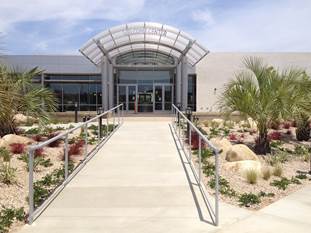
Miramar College to Hold Open House for Student Center
San Diego Miramar College will hold an open house on Sept. 3 for the new $8 million Student Resources and Welcome Center, one of the projects funded by the San Diego Community College District’s Propositions S and N construction bond program. Open house hours are from 10 a.m. to 1 p.m.
The college’s interim library was renovated to become the center, designed as a component of the newly opened Student Services Center.
The west entrance of the new building houses the Welcome Center, which includes Outreach and Assessment/Testing Services. The east entrance connects students to a state-of-the-art wellness and Student Health Center. The new building also houses permanent office and meeting space for the San Diego Miramar College Academic Senate.
Architects Mosher Drew designed the project.

PAWS San Diego to Merge With Humane Society
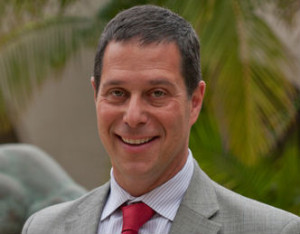
The San Diego Humane Society and SPCA announced a merger Monday with PAWS San Diego, which provides pet services for low-income seniors, the chronically ill and the disabled. The organizations will operate under the Humane Society banner, starting next month, and PAWS, which stands for Pets Are Wonderful Support, will be the group’s charity unit.
It is the second merger in as many months for the Humane Society, which in July completed a merger with the Escondido Humane Society.
Veterinarian Gary Weitzman, president and CEO of the San Diego Humane Society and SPCA, said the merger would “strengthen our role as the safety net for animals at risk of relinquishment to shelters in our community.” He said people sometimes have to choose between feeding themselves or their pets if they lose a job or a home, or if a family member becomes ill.
— Times of San Diego
————————
Personnel Moves…
Eisele Promoted to Silvergate Bank Presidency

Derek Eisele, who has served as vice chairman, executive vice president and chief credit officer for Silvergate Bank since co-founding it in 1996, has been promoted to bank president.
As president, Eisele will continue to serve as the bank’s chief credit officer, while assuming a larger role in operations including overseeing the human resources function. As chief credit officer, he oversees all lending functions of the Bank including commercial real estate, multi-family, construction, commercial and industrial, small business and single-family residential.
Eisele played a key role in recapitalizing the bank in 1996 and has been instrumental in growing it from an institution with $4 million in assets and four employees, to more than $734 million in assets today and 101 employees as of June 30, 2014.
Balestreri Potocki & Holmes Adds Associate

The law firm of Balestreri Potocki & Holmes announced the addition of Quelie Saechao as an associate. Saechao practices in the areas of professional liability, employment law, products liability, and general civil litigation. Her practice emphasizes construction law and focuses on matters related to allegations of construction defect against developers, builders, and general contractors as well as professional negligence against design professionals. She received her Bachelor of Arts from the University of California, Davis in 1999 and her Juris Doctor from California Western School of Law in 2004.
———————————-

America’s 10 Most Stolen Vehicles
The National Insurance Crime Bureau released its annual Hot Wheels report which identifies the 10 most stolen vehicles in the United States. The report examines vehicle theft data submitted by law enforcement to the National Crime Information Center and determines the vehicle make, model and model year most reported stolen in 2013.
For 2013, the most stolen vehicles in the nation were (total thefts in parentheses):
| 1. | Honda Accord | (53,995) |
| 2. | Honda Civic | (45,001) |
| 3. | Chevrolet Pickup (Full Size) | (27,809) |
| 4. | Ford Pickup (Full Size) | (26,494) |
| 5. | Toyota Camry | (14,420) |
| 6. | Dodge Pickup (Full Size) | (11,347) |
| 7. | Dodge Caravan | (10,911) |
| 8. | Jeep Cherokee/Grand Cherokee | (9,272) |
| 9. | Toyota Corolla | (9,010) |
| 10. | Nissan Altima | (8,892) |

